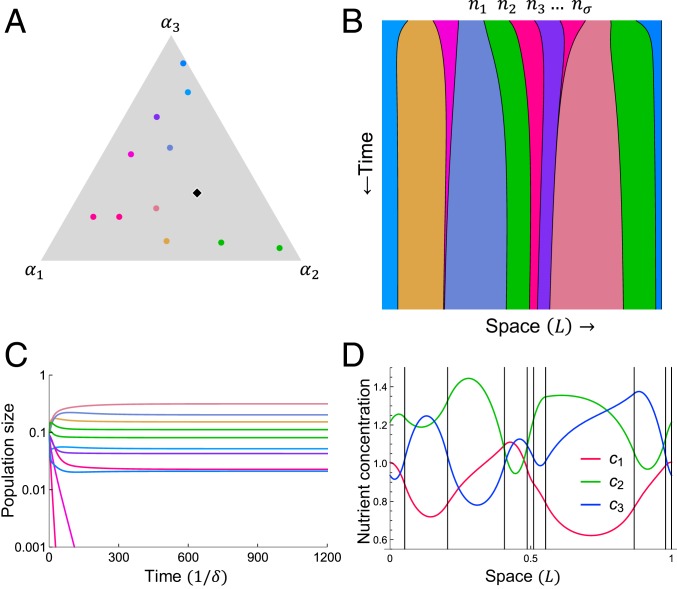Fig. 1.
A model with spatial structure and metabolic trade-offs supports more species than expected from the principle of competitive exclusion. Example with 3 nutrients and 11 species starting with equal populations is shown. (A) Each species uptakes nutrients according to its enzyme-allocation strategy . Because strategies satisfy the budget constraint , each can be represented as a point on a triangle in strategy space. The nutrient supply is represented as a black diamond. Colors correspond to strategies and are consistent throughout the figure. (B) Each species occupies a fraction of a 1-dimensional space (a ring) and has a corresponding time-dependent population size . Here, the nutrient diffusion time is 400. (C) Population dynamics from A. Nine species coexist on 3 nutrients. (D) Concentrations of the 3 nutrients at steady state (vertical black lines denote boundaries between populations).

